Was Sie über Gleichstrombatterien wissen sollten
Gleichstrombatterien sind unverzichtbare Stromquellen in unzähligen Anwendungen, von tragbaren elektronischen Geräten über Notstromsysteme bis hin zu Elektrofahrzeugen. Ihre Vielseitigkeit, Effizienz und die Fähigkeit, konstant Gleichstrom zu liefern, machen sie zu einem unverzichtbaren Bestandteil moderner Technologie. Dieser Artikel bietet eine detaillierte Untersuchung von Gleichstrombatterien und behandelt ihre Typen, Funktionen, Verwendung, Vorteile, Wartung und neue Technologien. So erfahren Sie alles, was Sie über diese wichtigen Energiespeicher wissen müssen.
- Was sind Gleichstrombatterien?
- Arten von Gleichstrombatterien
- Vorteile von Gleichstrombatterien
- Anwendungen von Gleichstrombatterien
- So wählen Sie die richtigen Gleichstrombatterien aus
- Wartung von Gleichstrombatterien
- Sicherheitsaspekte für Gleichstrombatterien
- Neue Trends bei Gleichstrombatterien
- Zukunft der Gleichstrombatterien
Was sind Gleichstrombatterien?
Gleichstrombatterien sind Stromspeicher, die Gleichstrom (DC) erzeugen. Im Gegensatz zu Wechselstrom (AC), bei dem der Stromfluss periodisch die Richtung ändert, fließt Gleichstrom konstant in eine Richtung. Diese Stromart ist entscheidend für elektronische Schaltungen, Kleingeräte, Fahrzeuge und mehr.
Geschichte der Gleichstrombatterien
Die Ursprünge von Gleichstrombatterien lassen sich auf Alessandro Voltas Erfindung der Voltaschen Säule im Jahr 1800 zurückführen. Diese einfache Batterie markierte den Beginn der elektrochemischen Energiespeicherung und führte schließlich zu einer Reihe von Batterietechnologien, die den heutigen Markt dominieren.
Funktionsweise von Gleichstrombatterien
Gleichstrombatterien basieren auf elektrochemischen Reaktionen zwischen zwei Elektroden (Anode und Kathode), die in einem Elektrolyten eingebettet sind. Diese Reaktionen erzeugen eine Potentialdifferenz, die dazu führt, dass Elektronen durch einen externen Stromkreis fließen und angeschlossene Geräte mit Strom versorgen.
Arten von Gleichstrombatterien
Es gibt verschiedene Arten von Gleichstrombatterien, die jeweils für bestimmte Anwendungen geeignet sind. Wenn Sie die Unterschiede kennen, können Sie die richtige Batterie für Ihre Anforderungen auswählen.
Blei-Säure-Batterien
Dies sind die ältesten und am weitesten verbreiteten wiederaufladbaren Gleichstrombatterien. Sie sind bekannt für ihre niedrigen Kosten, ihre Zuverlässigkeit und ihre hohe Stoßstromfestigkeit. Sie sind jedoch schwer und haben eine begrenzte Lebensdauer.
Anwendungen:
Automobile
Notstromversorgungen
Speicherung erneuerbarer Energien
Nickel-Cadmium-Batterien (NiCd)
Nickel-Cadmium-Batterien sind robust und funktionieren auch bei extremen Temperaturen gut. Sie sind wiederaufladbar und bieten eine gute Zyklenlebensdauer, leiden jedoch unter dem Memory-Effekt, der mit der Zeit zu einer Kapazitätsreduzierung führen kann.
Anwendungen:
Luftfahrt
Notbeleuchtung
Medizinische Geräte
Nickel-Metallhydrid-Akkus (NiMH)
Diese Gleichstrombatterien stellen eine Verbesserung gegenüber NiCd dar und weisen eine höhere Kapazität und geringere Umweltbelastung auf. Sie werden häufig in der Unterhaltungselektronik eingesetzt.
Anwendungen:
Digitalkameras
Spielzeug
Schnurlose Telefone
Lithium-Ionen-Batterien (Li-Ionen)
Lithium-Ionen-Akkus sind aufgrund ihrer hohen Energiedichte, ihres geringen Gewichts und ihrer langen Lebensdauer die beliebtesten Gleichstrombatterien. Sie werden in einer Vielzahl von Geräten eingesetzt, vom Smartphone bis zum Elektrofahrzeug.
Anwendungen:
Smartphones
Laptops
Elektrofahrzeuge
>>Siehe auch: Die wichtigsten Unterschiede zwischen LTO- und LFP-Batterien verstehen
Lithium-Eisenphosphat-Batterien (LiFePO4)
Diese Gleichstrombatterien sind eine Unterart der Lithium-Ionen-Batterien und bieten mehr Sicherheit und Stabilität. Sie zeichnen sich durch eine lange Lebensdauer aus und werden zunehmend in der Solarspeicherung und im Elektrotransport eingesetzt.
Anwendungen:
Solarenergiesysteme
Elektrofahrräder
Marineanwendungen
Vorteile von Gleichstrombatterien
Gleichstrombatterien bieten zahlreiche Vorteile, die sie für ein breites Anwendungsspektrum geeignet machen:
Portabilität
Ihre kompakte Größe und die Fähigkeit, viel Energie zu speichern, machen sie ideal für tragbare Geräte.
Effizienz
Sie liefern effiziente Energie mit minimalen Verlusten, insbesondere beim Einsatz in Gleichstromsystemen.
Zuverlässigkeit
Gut gewartete Gleichstrombatterien liefern eine konstante und vorhersehbare Leistung.
Wiederaufladbarkeit
Viele Typen, wie Li-Ionen und NiMH, sind wiederaufladbar, was die Kosten langfristig senkt und die Umweltbelastung reduziert.
Anwendungen von Gleichstrombatterien
Gleichstrombatterien werden in verschiedenen Branchen und im täglichen Leben eingesetzt. Ihre Anwendungen unterstreichen ihre Bedeutung in der modernen Gesellschaft.
Unterhaltungselektronik
Von Fernbedienungen bis hin zu tragbarer Technik versorgen Gleichstrombatterien unzählige Geräte mit Strom.
Automobilindustrie
Blei-Säure- und Lithiumbatterien sind in Autos unverzichtbar, sowohl zum Starten des Motors als auch zum Antrieb von Elektrofahrzeugen.
Erneuerbare Energiesysteme
Solar- und Windsysteme verwenden Gleichstrombatterien zur Energiespeicherung und stellen so sicher, dass Strom auch dann verfügbar ist, wenn weder Sonnenlicht noch Wind vorhanden sind.
Notstromversorgungssysteme
Gleichstrombatterien sorgen für die notwendige Notstromversorgung in Krankenhäusern, Rechenzentren und anderen kritischen Infrastrukturen.
Industrielle und militärische Anwendungen
Robuste Gleichstrombatterien unterstützen den Betrieb in rauen Umgebungen, in denen Zuverlässigkeit unverzichtbar ist.
So wählen Sie die richtigen Gleichstrombatterien aus
Berücksichtigen Sie bei der Auswahl von Gleichstrombatterien die folgenden Faktoren:
Kapazität und Spannung
Bestimmen Sie den Energiespeicher- und Spannungsbedarf für Ihre Anwendung.
Zykluslebensdauer
Eine höhere Zyklenlebensdauer bedeutet, dass die Batterie öfter geladen und entladen werden kann, bevor sie versagt.
Gewicht und Größe
Für tragbare Anwendungen sind leichte und kompakte Batterien ideal.
Betriebstemperaturbereich
Stellen Sie sicher, dass die Batterie in Ihrer typischen Umgebung gut funktioniert.
Kosten
Wägen Sie die Anschaffungskosten gegen die Lebensdauer und Leistung der Batterie ab.
Wartung von Gleichstrombatterien
Die richtige Wartung verlängert die Lebensdauer von Gleichstrombatterien und gewährleistet eine optimale Leistung.
Regelmäßige Inspektion
Auf Anzeichen von Verschleiß, Korrosion oder Leckagen prüfen.
Richtige Ladepraktiken
Verwenden Sie geeignete Ladegeräte und vermeiden Sie Überladung oder Tiefentladung.
Lagerung
An einem kühlen, trockenen Ort aufbewahren und vor direkter Sonneneinstrahlung und brennbaren Materialien schützen.
Entsorgung und Recycling
Entsorgen Sie alte Batterien ordnungsgemäß. Viele Materialien sind recycelbar und sollten nicht in den normalen Müll geworfen werden.
Sicherheitsaspekte für Gleichstrombatterien
Bei der Arbeit mit Gleichstrombatterien steht die Sicherheit an erster Stelle.
Handhabung
Befolgen Sie immer die Anweisungen des Herstellers und tragen Sie Schutzkleidung.
Installation
Achten Sie auf die richtige Polarität und sichere Montage.
Belüftung
Bei Blei-Säure-Batterien und anderen entlüftenden Batterien verhindert eine ordnungsgemäße Belüftung die Ansammlung von Gas.
Brandschutz
Halten Sie Feuerlöscher für elektrische Brände in der Nähe bereit.
>>Siehe auch: 18650-Batterien in 48-V- und 52-V-Konfigurationen verstehen
Neue Trends bei Gleichstrombatterien
Durch Innovationen werden die Leistung und Anwendungsmöglichkeiten von Gleichstrombatterien kontinuierlich verbessert.
Festkörperbatterien
Diese Batterien der nächsten Generation bieten eine höhere Energiedichte und verbesserte Sicherheit, indem flüssige Elektrolyte durch feste Materialien ersetzt werden.
Graphenbatterien
Mit Graphen verstärkte Gleichstrombatterien laden schneller und haben eine längere Lebensdauer.
Recyclingtechnologien
Verbesserte Recyclingprozesse reduzieren die Umweltbelastung und gewinnen wertvolle Materialien zurück.
Intelligente Batterien
Integrierte Elektronik ermöglicht die Überwachung von Gesundheits-, Leistungs- und Sicherheitsparametern.
Zukunft der Gleichstrombatterien
Gleichstrombatterien werden bei der Energiewende eine zentrale Rolle spielen. Dank Fortschritten in Materialwissenschaft und Fertigung werden künftige Gleichstrombatterien leichter, sicherer, effizienter und umweltfreundlicher sein. Sie werden alles mit Strom versorgen, von Haushaltsgeräten bis hin zu großen Stromnetzen, und so zu Energieunabhängigkeit und CO2-Neutralität beitragen.
Zusammenfassend lässt sich sagen, dass Gleichstrombatterien für das moderne Leben und die moderne Technologie unverzichtbar sind. Von der frühen Voltaschen Säule bis zu den heutigen Hochleistungs-Lithiumbatterien spiegelt ihre Entwicklung den Einfallsreichtum der Menschheit bei der Nutzung und Speicherung von Energie wider. Ob für Alltagselektronik, kritische Infrastruktur oder grüne Energie – Gleichstrombatterien sind gekommen, um zu bleiben und werden kontinuierlich verbessert.
Um den größtmöglichen Nutzen aus Ihrer Investition zu ziehen, wählen Sie den richtigen Typ, befolgen Sie bewährte Wartungsmethoden und bleiben Sie über die neuesten Entwicklungen informiert. Gleichstrombatterien zu verstehen, ist nicht nur etwas für Ingenieure, sondern für jeden, der mit Technologie arbeitet. Die Zukunft ist rosig und wird von Gleichstrombatterien angetrieben.

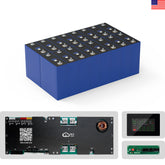

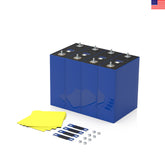

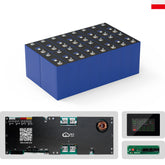

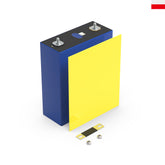

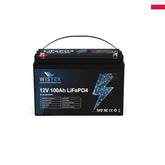
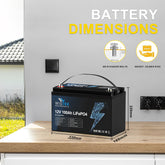
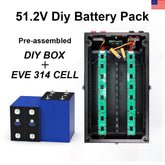

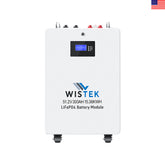
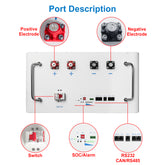
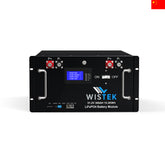
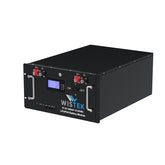


Leave a comment
All blog comments are checked prior to publishing